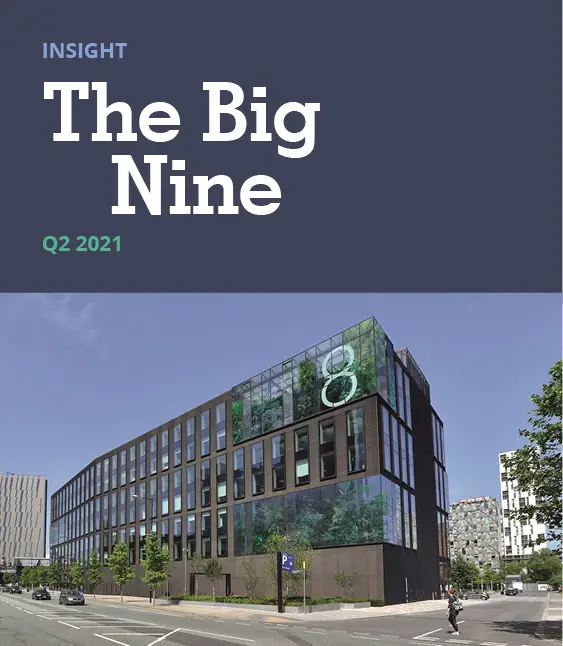According to new data from strategic real estate advisor Avison Young, Manchester’s office market has continued to improve since the easing of lockdown restrictions, with figures reporting a slow but steady recovery from a year that impacted the region like no other, as found in the latest Big Nine report released this week.
The report offers a full evaluation of the region’s office take-up and investment deals in the second quarter of 2021.
Although still below its ten-year average, the market has seen a take-up of 220,183 sq ft and 153,355 sq ft in the city centre and out-of-town markets respectively. Despite this lower-than-average performance, the Manchester market received the Q2 highest investment figures out of all the cities featured in the Big Nine, as well as the highest 12-month quarterly average following significant deals such Number 8 First Street and the second phase of Muse Developments’ New Victoria scheme.
The report shows a trend in sub 5,000 sq ft units that has been continuing to gain traction, as occupiers lean towards a more agile approach to their space during uncertain times. Landlords have also become more accepting of shorter leases as the rise in flexible working continues to mount.
This quarter has seen an increasing amount of former retail department stores such as M&S (50,000sq ft) and House of Fraser (500,000sq ft) being repurposed into mixed-used schemes to accommodate office space requirements. Both are due to complete this year, borne as a result of the changing landscape of the retail market, due to lengthy lockdowns and restrictions.
This comes in addition to approximately 460,000 sq ft of speculative developments due for completion this year, including former BBC site Circle Square, which will also be repurposed into a mixed-use development.
Chris Cheap, Principal and managing director of Avison Young’s Manchester office, said, “The past 18 months have been a prolonged period of extreme uncertainty. Delayed advice from the Government has meant that the much-anticipated return to office has been stalled a number of times, which has caused a staggering of deals before the end of the quarter.
However, there is a desire to adopt new adapted working patterns, with a huge population of workers craving some of the regularity of the pre-pandemic working week. So, despite being under its usual average, a 220,183 sq ft take-up is a testament to Manchester’s resilience within the office sector and the overall need to return to the office, in whatever guise that may be.
It’s certainly no surprise to see the flexible working model gaining more traction amongst occupiers and the growth of short to medium term managed agreements cannot be ignored as a clear market signal of what the future may hold. The same can also be said about the rise in retail space conversions: a slow-growing trend that was accelerated by Covid-19. Our grand old department store buildings are going to be front and centre in the office market in the coming years and with careful curation they can provide space that works for a variety of occupiers.
It is clear that from now onwards, the experiential nature of our work, leisure and retail spaces will be central to how we refurbish and develop real estate. Creating engaging mixed-use environments that speak effectively to a variety of audiences and are underpinned by a range of offers will be fundamental to helping people fall in love with our towns and cities again.”
Avison Young’s Big Nine report analyses the office trends in the largest cities outside of London, including Birmingham, Bristol, Cardiff, Edinburgh, Glasgow, Leeds, Liverpool, Manchester and Newcastle.







